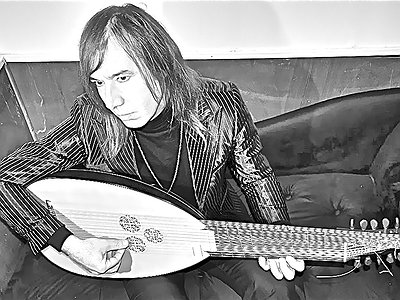When did you start composing - and what or who were your early passions and influences?
I started composing around 1980. My early influences were industrial music, renaissance music, obscure contemporary music. I started classical guitar lessons at age 11 and got into early music, Bach, Erik Satie and such but at the same time I discovered the Velvet Underground, Robert Johnson and later on I got into new wave, coil, minimalism and visual art.
What do you personally consider to be incisive moments in your work and/or career?
When I was playing in the streets of Maastricht at age 14 and my grandma saw me play and when the United States gave me the first O1 visa.
When I started to think about new compositions for lute and made the decision to perform the classical lute repertoire backwards. From this mirror image writing followed the idea to compose in layered palindromes only and repeat them over elongated periods of time.
What are currently your main compositional challenges?
The challenges are the minimalist idea of using only a few chords, one or two tunings, one instrument and then to be interesting within these limits and constraints. And to come up with a simple melody.
What do you usually start with when composing?
I try to open myself up to what's around me and what's going around. Emptiness is a good start. I channel the melodies.
How do you see the relationship between timbre and composition?
My compositions follow from the palindrome idea, so a color will be repeated over a long period, which changes the listener's perception of color.
What do improvisation and composition mean to you and what, to you, are their respective merits?
Improvisation I do with others. Composition I do mostly by myself. Although now I compose with Jim Jarmusch as well. The merit of improvisation is its immediate throwaway quality.
Do you feel it important that an audience is able to deduct the processes and ideas behind a work purely on the basis of the music? If so, how do you make them transparent?
No I don't feel that it's important to understand how the pieces are made in order to appreciate them, that’s only for the specialists. I don't compose for specialists only.
The relationship between music and other forms of art – painting, video art and cinema most importantly - has become increasingly important. How do you see this relationship yourself and in how far, do you feel, does music relate to other senses than hearing alone?
That has always been evident for me, this crossover element of different disciplines and it is much present in my layered work. Personally that is what keeps it interesting. I am more influenced by visual art than by music anyway. Musicians always talk about their next show and other futile subject matter. I have always applied visual art theories to music and try to go look at art when I am travelling.



